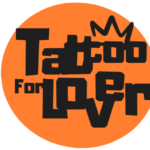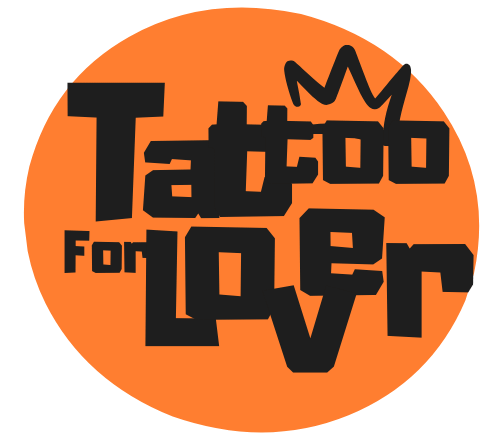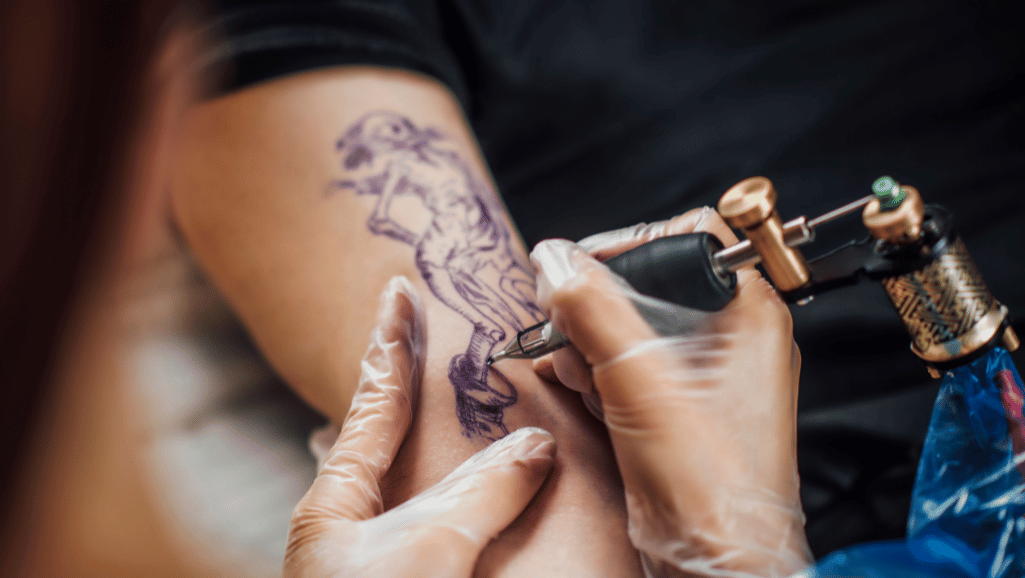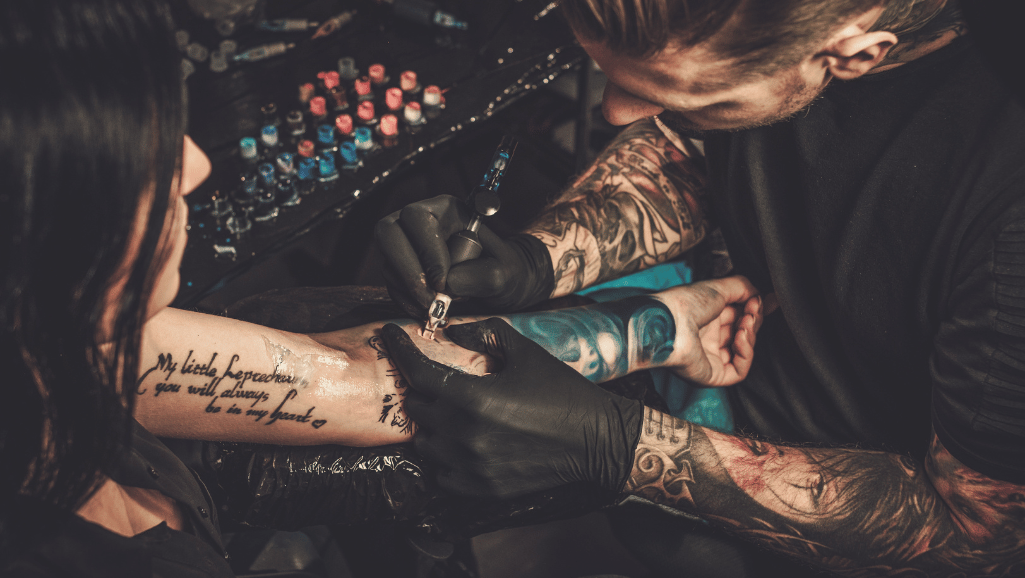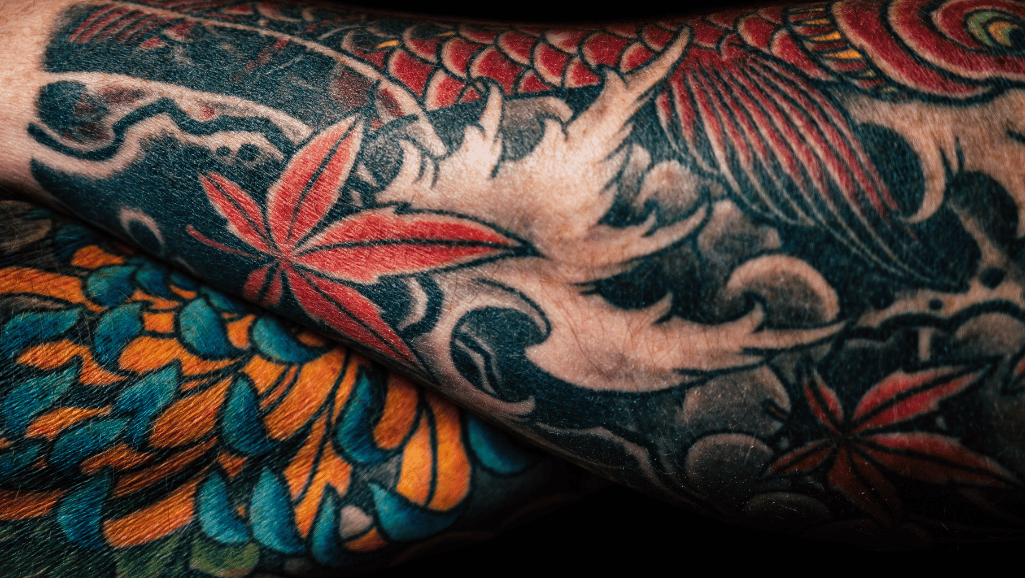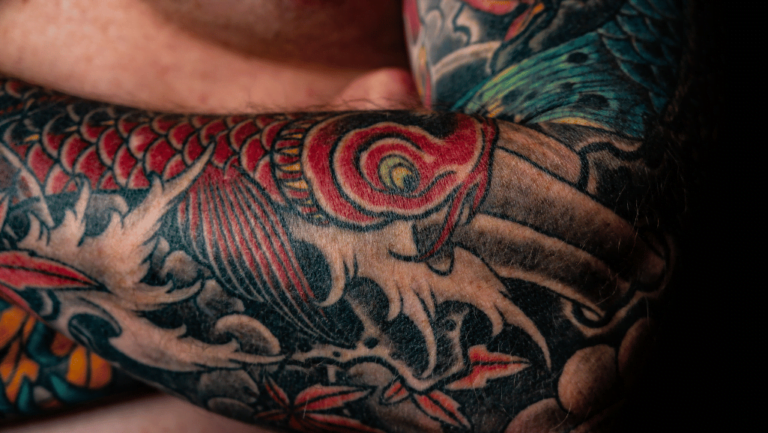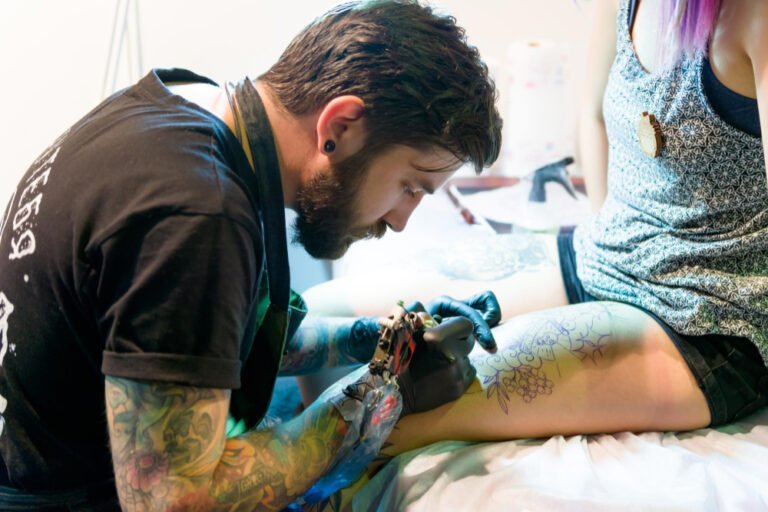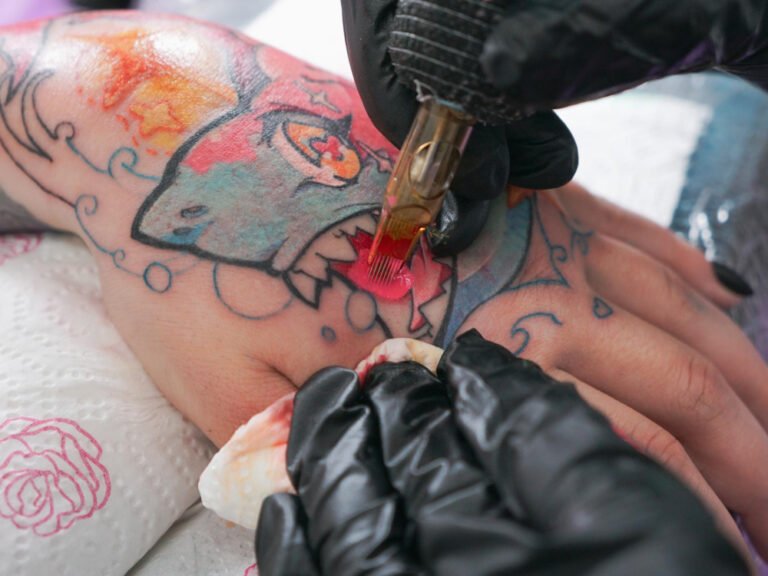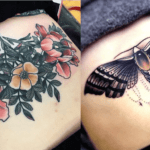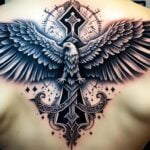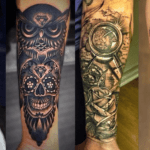Getting a tattoo is a deep way to express yourself, but it comes with many tattoo placement challenges. Finding the optimal tattoo placement is key. It’s about picking a spot that looks good and means something special to you. You need to think about the design and how it fits your body.
It’s important to think about how visible you want your tattoo to be, how much it will hurt, and how it will heal. Some spots like the ribs and hands can be more painful because they’re less cushioned. But places like the thigh and calf might be easier for many people.
The Honorable Society and other respected tattoo shops highlight how skin can be different in various spots. This includes scars, stretch marks, and the strength of skin on the collarbone. Today, tattoos are more accepted, so it’s key to follow health regulations and safety rules as much as focusing on art.
Key Takeaways
- Identify optimal tattoo placement based on personal style, pain threshold, and potential career impact.
- Understand that body areas with less fat and muscle, like the ribs and feet, can heighten the pain during tattooing.
- Grasp the importance of working with experienced artists from reputable shops like The Honorable Society for tailored advice.
- Realize the importance of considering future implications of a tattoo’s visibility and significance.
- Recognize the diverse client base within the tattoo industry, including a significant proportion of People of Color (POC).
li>Appreciate how social acceptance of tattoos has improved, influencing the collective perception.
- Be aware of the importance of cleanliness and certification of tattoo establishments for a safe tattooing experience.
Understanding the Significance of Tattoo Design and Placement
Thinking about getting a tattoo means diving deep into symbolic tattoo design and the personal significance in tattoos. These aspects show who we are and our life stories. They also affect where and how we wear our tattoos.
Symbolism and Personal Significance
Every tattoo tells a story, woven into our skin. It holds our personal tales, beliefs, or dreams. This deep connection makes a tattoo more than just art. For example, tattoos on the right arm show bold energy, while those on the left protect and shield our feelings.
The Influence of Design on Tattoo Location
When picking a tattoo spot, think about the design’s size and details. Big, detailed tattoos look great on the back or thigh. Smaller symbols work well on the wrist, where they move with us and change with our lives.
Considering Future Implications of Tattoo Placement
Choosing a tattoo spot also means thinking about the future. Tattoos on active spots like elbows or fingers fade faster and need more upkeep. Jobs or lifestyles might call for tattoos in less visible spots, showing the need for careful planning.
The choice of symbolic tattoo design, personal significance in tattoos, tattoo design placement considerations, and ideal tattoo placements is crucial. It ensures the tattoo stays meaningful and beautiful over time. Keeping these factors in mind makes the tattoo a source of joy and pride for life.
| Tattoo Location | Symbolism and Significance | Average Size |
|---|---|---|
| Arms | Right: Active energy; Left: Emotional shield | Varies, larger designs possible |
| Hands/Fingers | Action and creativity | Average 2.5 inches |
| Trunk (Spine) | Enduring values | Large, detailed designs |
| Legs | Right leg: New journeys; Left leg: Life experiences | Large designs fitting |
Comprehensive Guide to Tattoo Locations and Body Art Positioning
When thinking about body art positioning, consider factors like the best tattoo spots, how much pain you can handle, and if you’ll need to hide it at work. Each body part is unique for tattoos, affecting your experience and how you feel about the ink.
Choosing the right spot for your tattoo is key. Areas like the outer shoulder or upper back are less painful because the skin is thicker. These spots are great for big designs. But, places like the ribcage or neck hurt more because the skin is thin and close to the bone. Yet, people pick these spots for their look and meaning.
- Least Painful Tattoo Areas: upper arms, shoulders, outer shoulder, lower and upper back
- Moderately Painful Tattoo Areas: chest, stomach, lower back, buttocks, calves
- Most Painful Tattoo Areas: ribcage, feet and ankles, hands and fingers, spine, neck and throat
Places like the inner forearm or wrist are popular for their visibility. They let you show off your tattoo easily. But, some jobs might require you to cover them up. About 46% of Americans have tattoos, and how open workplaces are to them varies.
| Body Part | Pain Level | Visibility | Professional Acceptance |
|---|---|---|---|
| Forearm | Low to Moderate | High | Moderate to High |
| Neck/Face | Very High | Very High | Low |
| Upper Back | Low | Low to Moderate | High |
| Hands/Fingers | High | Very High | Low |
Choosing where to get a tattoo is a big decision. It should fit with your lifestyle, career, and health. Experts say the design should face the body’s center, but there are exceptions based on the body part and the design.
Good body art positioning and strategic tattoo placement make the tattoo look great and fit well with your body. This way, your tattoo can be a source of happiness and pride for years to come.
Expert Strategies for Selecting the Ideal Tattoo Spots
Choosing the right spot for a tattoo means knowing how design, body area, and lifestyle work together. Experts can help pick a spot that looks great and avoids problems later. Let’s look at how to find the best spots for tattoos based on how visible they are and what you need.
Assessing Body Areas for Tattoo Visibility and Impact
How visible a tattoo is matters a lot. Surveys show 23% like putting tattoos on the front, like the chest or forearm, for everyone to see. This choice is often based on how you dress and how you want your tattoo to be seen in your daily life.
Professional Advice on Tattoo Location Difficulty and Solutions
Many people hesitate to get tattoos because of the pain in certain spots. For example, 33% advise avoiding the ribs or knees because they hurt more. But, 15% suggest “peekaboo” tattoos, like behind the ear or inside the lip, for those who want something less visible.
| Preference | Body Area | Visibility | Advisory % |
|---|---|---|---|
| Large, detailed designs | Back, thigh, upper arms | Low to moderate | 27% |
| Smaller designs | Inner wrist, hand, behind the ear, ankle | Moderate to high | 18% |
| Colortful tattoos | Areas easily covered from the sun | Varies | 31% |
| “Peekaboo” tattoos | Behind the ear, inside the lip | Low | 15% |
Choosing the right spot for a tattoo makes it look better and fits with your life. This careful choice leads to a tattoo you’ll love forever.
Minimizing Tattoo Location Problems: Pro Tips and Practices
To avoid tattoo placement mistakes, talk in detail with your tattoo artist. Discuss the design’s size, style, and where it will go on your body. 84% of tattoo artists think these talks are key. 57% of clients say they’re vital for getting a tattoo that matches their idea. 71% of clients found working together made the design process smooth.
Think about your body’s shape when picking a tattoo spot, like 67% of clients do. This makes the tattoo look better and fit your body well. Some prefer tattoos in places like the chest or back, 38%, for a bit of privacy but still want to show it off. Others, 29%, like hidden spots like underarms for smaller, simpler tattoos.
- Tattoos on arms and legs can be detailed because they’re easy to reach and less painful.
- Semi-visible spots are good for those who want to hide their tattoos at work but show them off with friends.
- Hidden tattoos are for those who want a personal symbol that’s just for them.
88% of tattoo studios follow strict cleanliness rules to keep tattoos safe. They use new needles and clean equipment often. Always talk about any health issues or allergies with your artist, as 92% of pros recommend.
When picking a tattoo spot, make sure your artist gives you good aftercare advice. This helps avoid problems like infections or slow healing. Taking good care of your tattoo after it’s done is key to its quality and how long it lasts.
For more on tattoos and pain, check out how your body type affects bicep. Knowing this can help you make a tattoo choice you’ll be happy with for a long time.
Maximizing Aesthetics: Creative and Strategic Tattoo Placement
Innovative creative tattoo placements and strategic design can make body art stand out. By thinking about the body’s shape and how it moves, tattoo artists can solve body art positioning hurdles. This leads to beautiful designs that look great with the body.
Unique Tattoo Location Ideas
Looking for unique tattoo placement ideas is key for standout body art. Places like the inner arm or upper thigh offer a fresh look. These spots are less common and let you express your style in a new way.
Here are ways to turn unusual body areas into eye-catching tattoos:
- Forearm Edges: A detailed design here looks striking, using the natural line for guidance.
- Behind the Ear: A small tattoo here is personal and easy to hide, perfect for beginners or those in conservative jobs.
- Collar Bones: This area frames tattoos or designs well, thanks to its two lines.
Blending Art with Anatomy: Optimal Positioning of Tattoos
Getting tattoos to blend with the body is crucial for a natural look. Designs that follow the body’s curves or skin stretch look better and improve the tattoo’s appearance.
This table shows how different body parts are great for tattoos that match the body’s movements:
| Body Part | Suitable Tattoo Types | Considerations |
|---|---|---|
| Shoulder Blades | Larger, symmetric designs | Works well with natural muscle movements, enhancing the tattoo during movement. |
| Upper Back | Full-back scenes or texts | Ideal for expansive artworks, offers large, flat canvas. |
| Wrist | Small symbols or phrases | High visibility, perfect for tattoos meant to serve as constant reminders or inspiration. |
The mix of beauty and body shape in tattoo art leads to unique and beautiful tattoos. Using unique tattoo placement ideas or blending tattoos with the body makes each piece special. The aim is to boost the natural beauty and personality of the wearer.
Tattoo Placement Challenges: How to Overcome Common Issues
Getting a tattoo in tricky spots can be tough. Places like the ankle or ribs are tricky because of their shape and sensitivity. To make sure your tattoo looks good and heals well, you need a good plan.
Understanding the unique anatomy of each body part is crucial in overcoming body art positioning concerns. Every spot has its own set of challenges. For example, areas that move a lot, like elbows and knees, can change the look of your tattoo over time. So, think about how your skin might change in the future.
Talking to a skilled tattoo artist is key to solving placement problems. They can help you avoid issues like skin infections from dirty equipment or allergic reactions to certain inks, like red.
- Choose a licensed and reputable artist who utilizes sterile equipment.
- Discuss any skin sensitivities or allergies, particularly to tattoo inks.
- Consider long-term body changes and how they might affect the tattoo.
- Be prepared for the natural healing process which involves stages like swelling, peeling, and potential touch-ups.
Many people forget about the social impact of tattoos. If you work in a certain field, you might need to place your tattoo carefully. Also, how your tattoo heals is important. It usually takes about two weeks, but this can change based on the tattoo’s size and where it’s placed.
If you want to remove a tattoo because of its location or how it turned out, laser tattoo removal might be an option. It often takes more than one session. Working with a qualified professional can help set your expectations and make the process smoother.
Keeping your tattoo looking great over time means taking good care of it. This includes keeping it moisturized and protected from the sun. Doing this can make your tattoo last longer and look better.
Knowing these things can help ease many worries about tattoo placement. With careful planning and advice from experts, your tattoo can be a source of pride for years.
The Role of a Tattoo Artist in Navigating Difficult Tattoo Spots
Finding the right tattoo artist is crucial for overcoming the challenges of hard-to-place tattoos. An expert in professional tattoo consultations is key. They help create strategies that fit your style and body shape.
Choosing an Artist with Relevant Style Expertise
It’s important to find a tattoo artist who knows your style. With more young Americans getting tattoos, the need for artists skilled in various styles is growing. This includes everything from realism to traditional designs.
Artist’s Role in Guiding Tattoo Positioning
Tattoo artists give great advice on where to place tattoos, especially for tricky spots. They think about how visible the tattoo will be, its look, and the body’s anatomy. This helps pick the best spot for the tattoo, making sure it looks good and the wearer is happy.
Importance of Professional Consultations
Professional tattoo consultations are key for getting advice that fits your needs. These meetings clear up any doubts about where to put a tattoo and talk about the challenges of tattooing different areas of the body.
The demand for skilled tattoo artists is rising by 10% to 15% each year. This shows how important they are in tattooing. Artists keep learning new techniques from around the world. This helps them give valuable advice that makes tattoos look great and work well.
More people want custom tattoo designs, pushing the industry to offer better services. About 70% of clients want unique designs. This means artists play a big role in bringing these designs to life with their placement skills.
Skilled tattoo artists are worth the investment, with rates from $100 to $300 an hour. Clients should look for artists who can guide the placement of their tattoos. This way, they get a tattoo that looks amazing and fits their body and personality.
Let’s wrap up by looking at some stats. They show why picking an artist who knows the body well is so important.
| Statistic | Percentage/Value |
|---|---|
| U.S. individuals aged 18 to 35 with tattoos | 36% to 40% |
| Growth rate in tattoo industry demand annually | 10% to 15% |
| Average hourly rate of skilled tattoo artists | $100 to $300 |
| Clients seeking custom designs | 70% |
| Increase in tattoo industry-specific training attendance | 30% annually |
Covering the Bases: Hygiene, Safety, and Tattoo Aftercare
Getting a tattoo means taking good care of it to keep it looking great. This means following tattoo safety principles, keeping things clean, and sticking to tattoo aftercare routines. These steps help keep you healthy and make sure your tattoo heals well.
Tattoo artists must use clean equipment and new needles. This follows the U.S. FDA’s advice to stop ink contamination and lower infection risks.
- Aftercare is key, starting with washing the tattoo three times a day with mild soap and water. Be gentle when drying it and don’t rub it.
- Use a thin layer of antibiotic ointment for the first two to four weeks to protect the tattoo, as many experts suggest.
- Avoid tight clothing to prevent irritation and slow healing.
- Hot showers are nice, but avoid scalding water to keep the ink from fading too soon.
After five days, you can start using a non-fragrant lotion to keep the tattoo moisturized and reduce irritation.
Too much sun can harm your tattoo. Always use sunscreen with at least SPF 30, especially in the summer, to protect it from UV rays.
Skipping aftercare steps can cause discomfort, change how the tattoo looks, or lead to infections.
How a tattoo looks over time depends on its placement, ink color, size, style, and aftercare. Some styles like Blackwork and American Traditional stay vibrant and fade less.
Good tattoo aftercare is not just for looks; it’s also about your health. Keeping your new tattoo clean with products like H2Ocean’s Aquatat ointment, staying out of the sun, and following aftercare can greatly improve healing.
Your tattoo is a big part of who you are. Taking care of it means it will stay as beautiful as the day you got it.
The Socio-Cultural Dynamics of Tattoo Positioning and Visibility
In today’s world, tattoos are more than just body art. They are a powerful way to express oneself and carry deep cultural meanings. The way tattoos are seen and the cultural views on them can greatly affect where and how people get tattoos.
It’s important to understand the balance between personal tattoos and cultural views. Tattoos can show off personal beliefs, cultural roots, and individual identity. But, they can also be sensitive, especially if they use symbols important to certain cultures or groups.
Respecting Cultural Sensitivities in Tattoo Art
Tattoo artists must respect cultural sensitivities. This means knowing the history and meaning of symbols from different cultures. They are now taking steps to be socially responsible, like creating tattoos to support causes. This shows support for social issues without taking symbols that don’t belong to them.
Balancing Personal Expression and Workplace Norms
Tattoos and workplace rules have always been tricky. Now, more employers see tattoos as not important for hiring, with 58% of them thinking so. But, how tattoos affect careers can change a lot by the industry. In creative fields like design, tattoos can boost creativity. But in finance, they might be seen differently.
| Industry | Tattoo Acceptance | Comments |
|---|---|---|
| Tech | High | Reflects creativity and non-conformity |
| Fashion/Design | High | Often viewed as an enhancement to creative ability |
| Finance/Law | Low | More conservative attitudes prevail |
| General Corporations | Medium | Depends on corporate culture and client interaction |
It’s important to find a balance between personal tattoos and work standards. Talking more about tattoos and their cultural meanings can help make workplaces more welcoming. This way, everyone’s identity and cultural background are respected.
Conclusion
Getting a tattoo means making many choices, especially about where to put it. Choosing the right spot for a tattoo is about more than just following tattoo placement trends. It’s about how the tattoo will look on your body. A tattoo positioning guide helps people make choices that match their style and stories.
The best tips for placing tattoos suggest finding a spot that’s both seen and meaningful. They also say getting advice from pros and thinking about the future is key. Today, more Americans have tattoos, with a big jump from 24% in 2004 to 29% in 2015. Women are getting tattoos more often, and there’s a lot of talk about tattoos in the workplace. Studios like Funhouse Tattoo in San Diego pay close attention to tattoo design placement tips, making sure tattoos last and look great.
Whether you want a small tattoo on your ankle or a big one on your arm, think it through carefully. Consider your culture and what the future might bring. A tattoo is more than just a pretty picture; it’s a part of who you are. With this article’s advice, you can make choices that will last a lifetime, creating a unique part of your story.
FAQ
What are the main challenges when it comes to tattoo placement?
How does symbolism and personal significance influence tattoo design and placement?
Can the design of a tattoo influence its possible locations on the body?
Why is it important to consider future implications when choosing tattoo placement?
What are some of the best tattoo spots for both visibility and impact?
How can you choose the right tattoo placement for your lifestyle?
What are some unique tattoo location ideas?
How do artists help clients overcome challenges with difficult tattoo spots?
What safety and hygiene measures should be followed during the tattooing process?
How can tattoo placement affect socio-cultural dynamics and workplace norms?
Forhad
Forhad's writing is not just about the artistry of tattoos or the latest trends in the industry; it's an exploration of the deep-rooted connections people have with their tattoos, reflecting personal narratives, cultural histories, and moments of transformation. Through a mix of in-depth features, personal narratives, and insightful analyses, he sheds light on the multifaceted nature of tattooing, revealing the emotional and cultural layers that lie beneath the surface.
